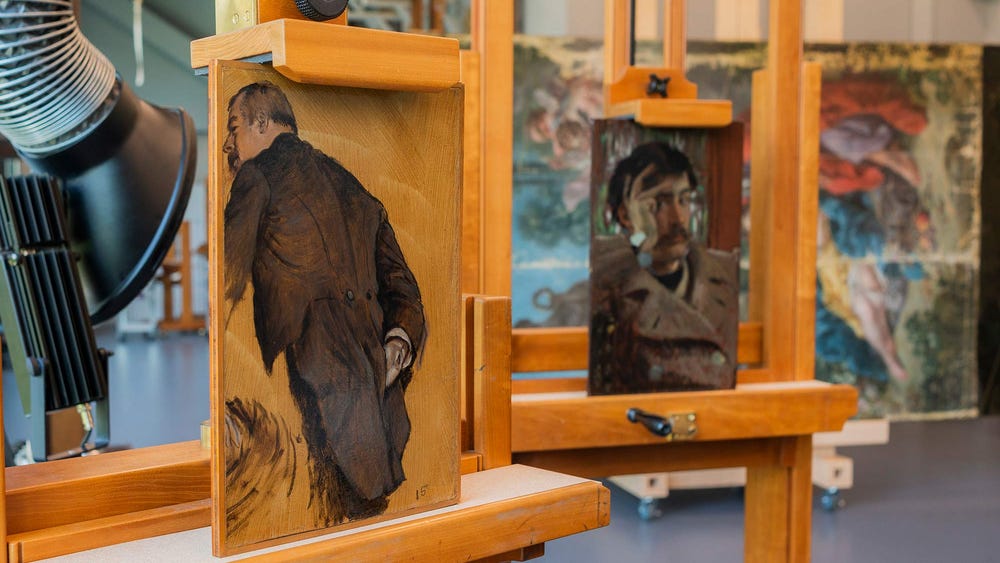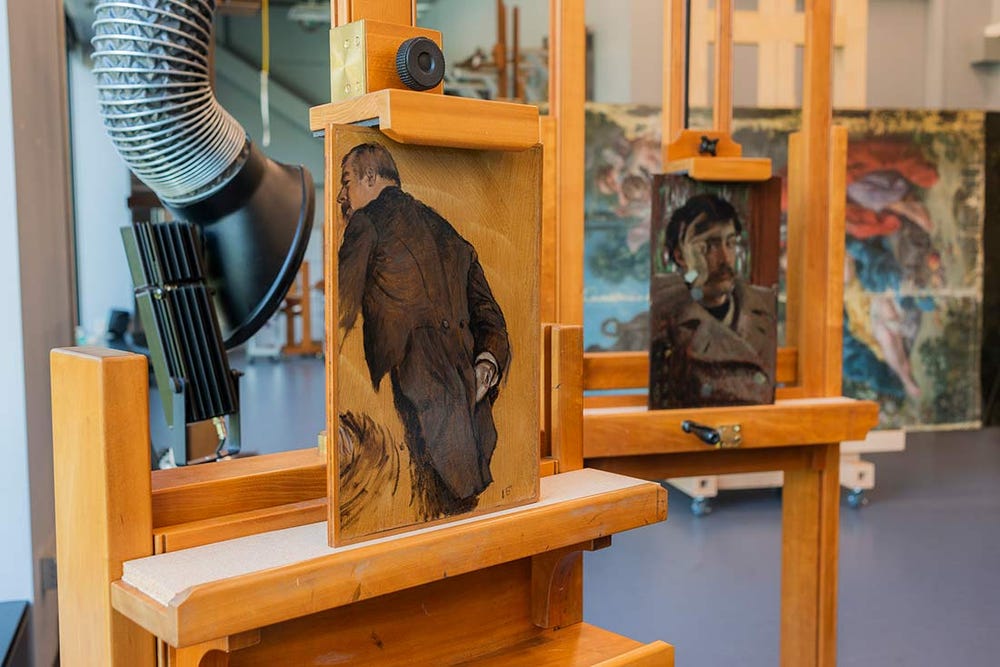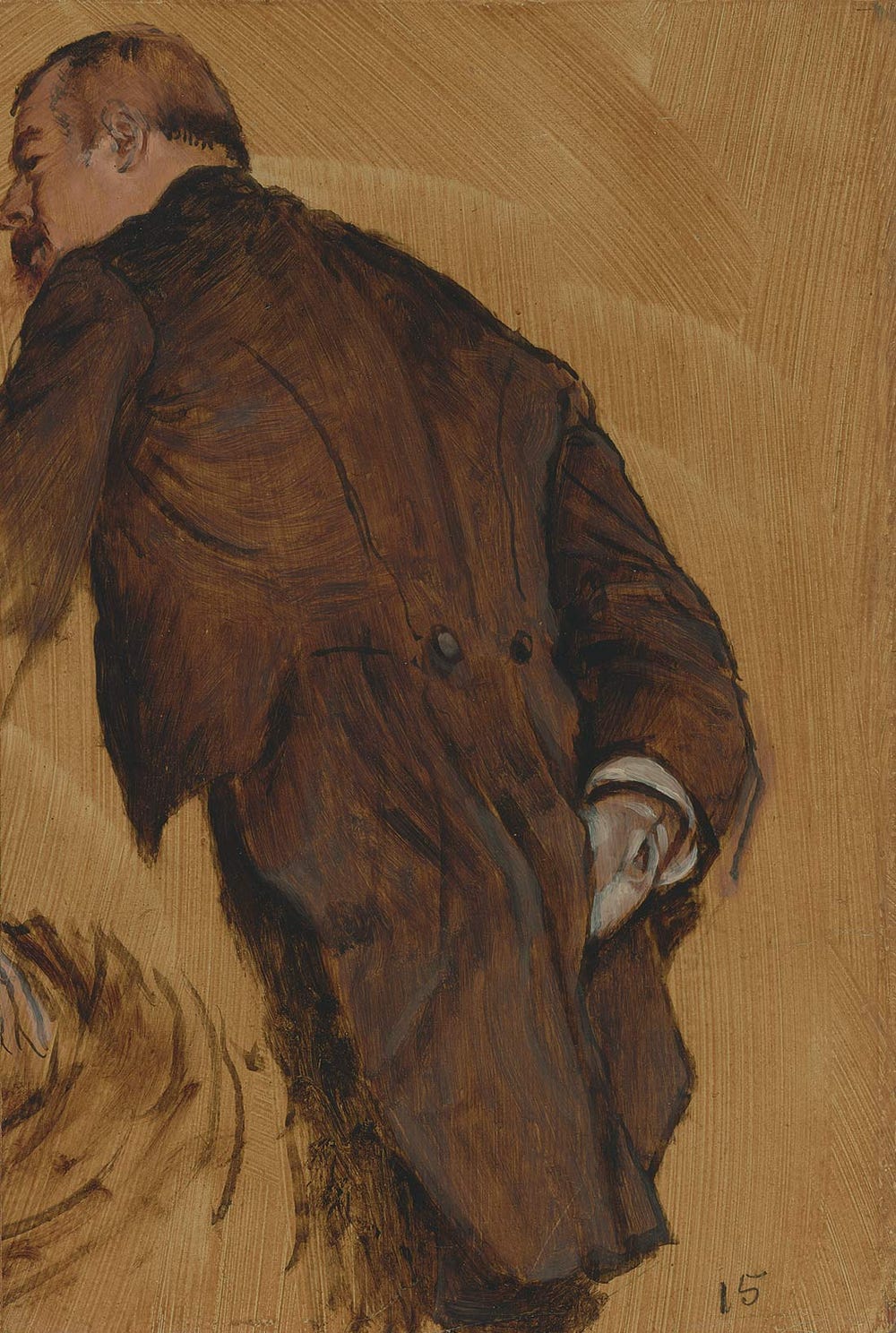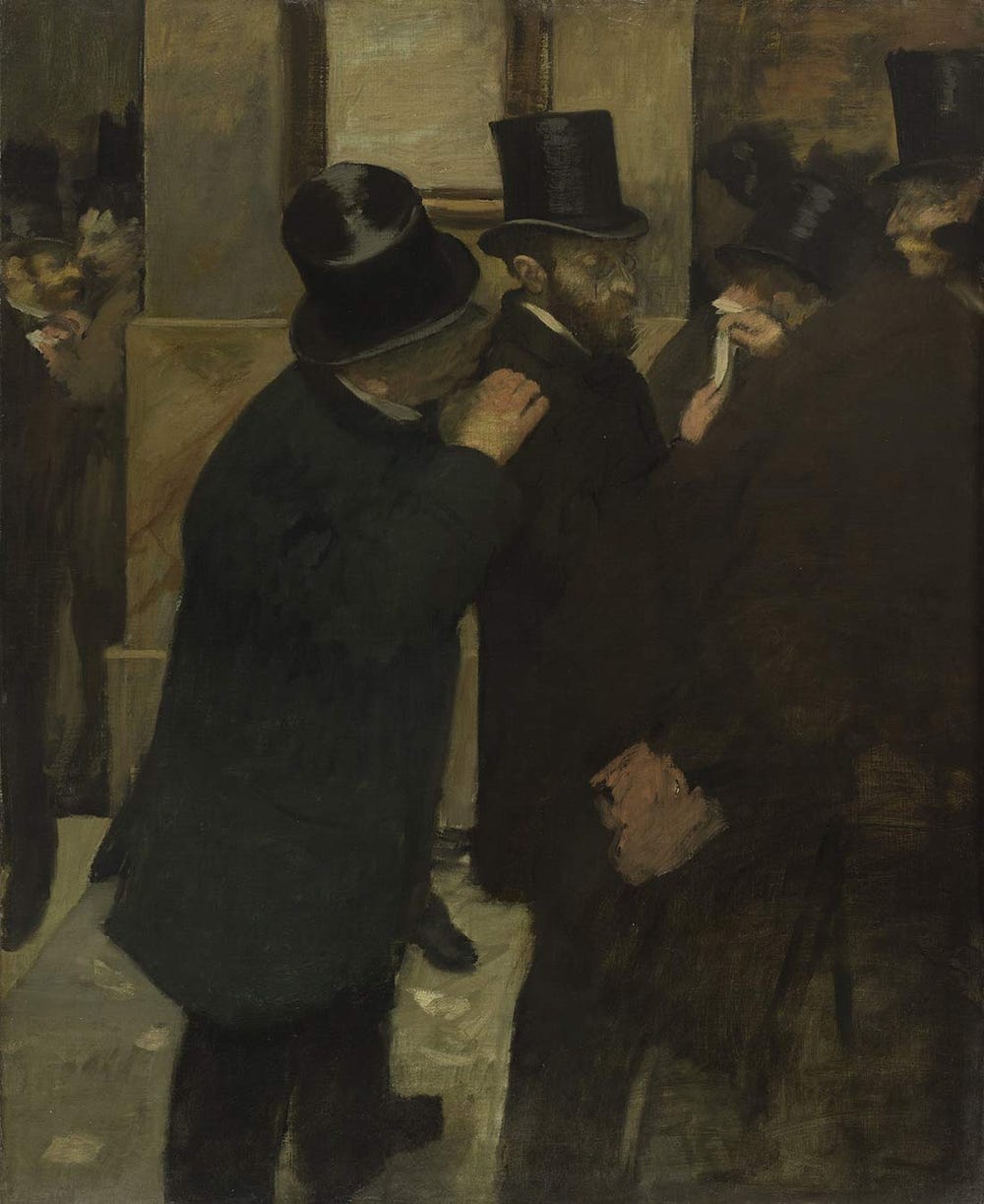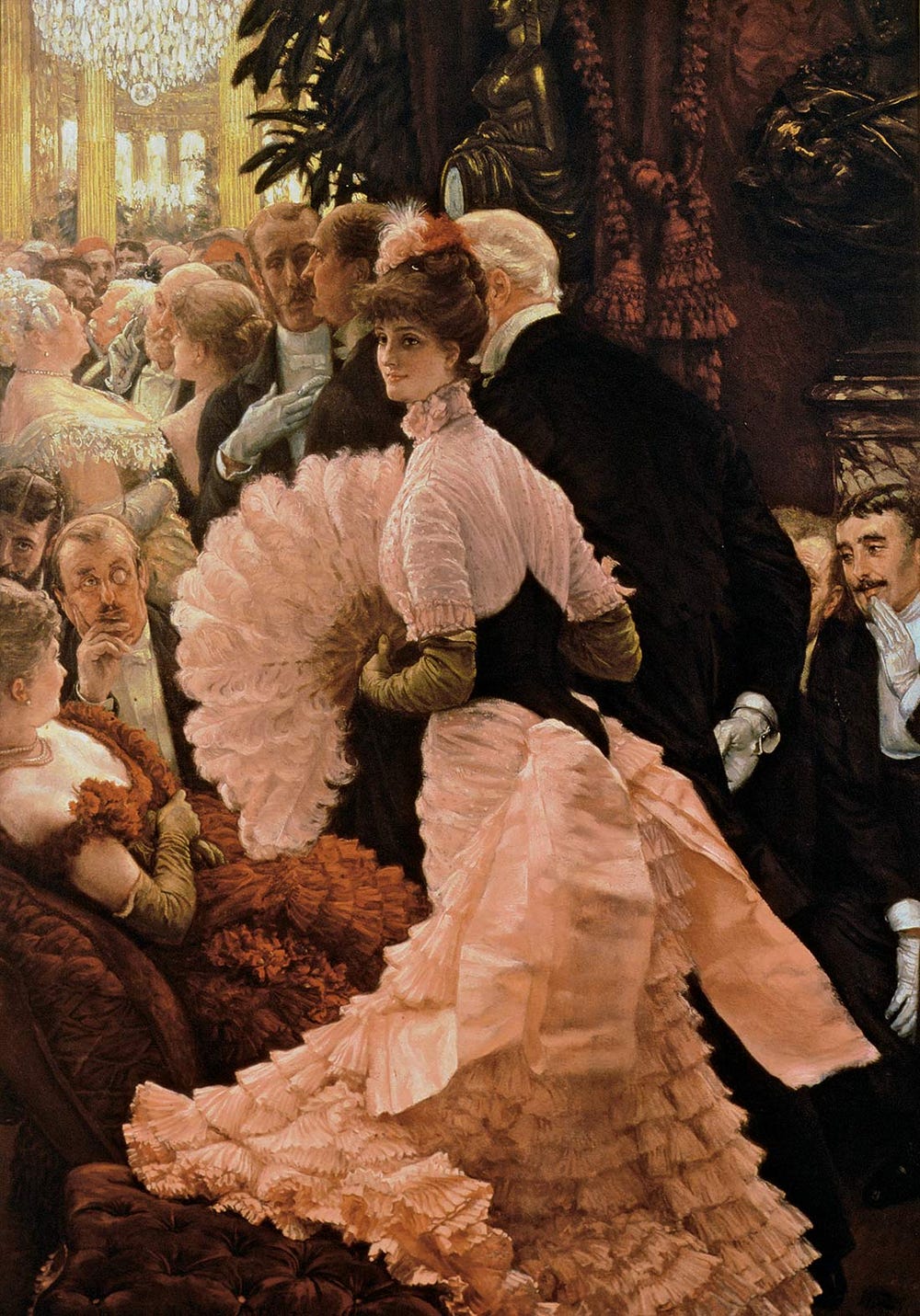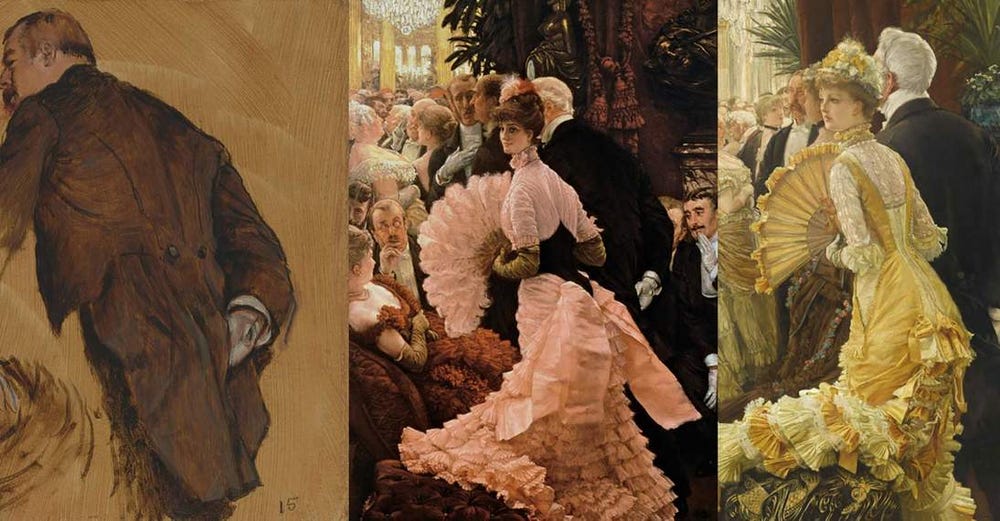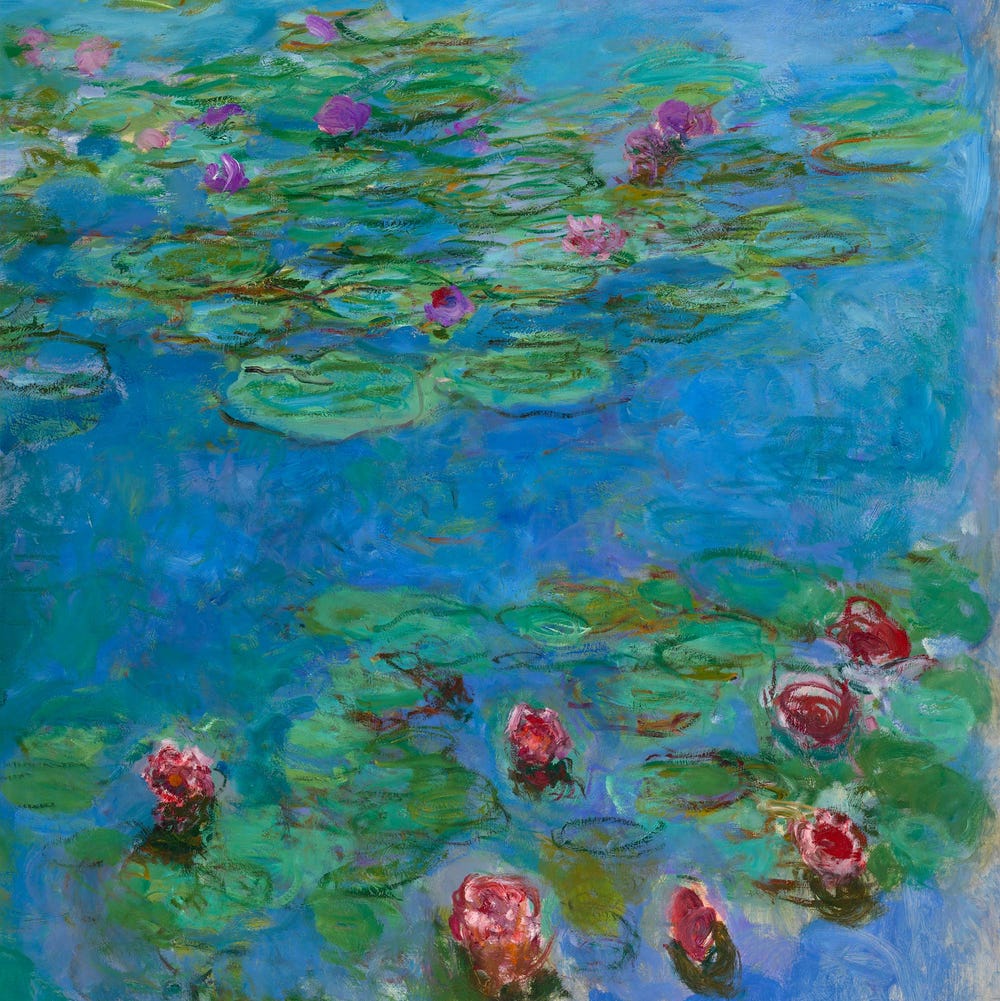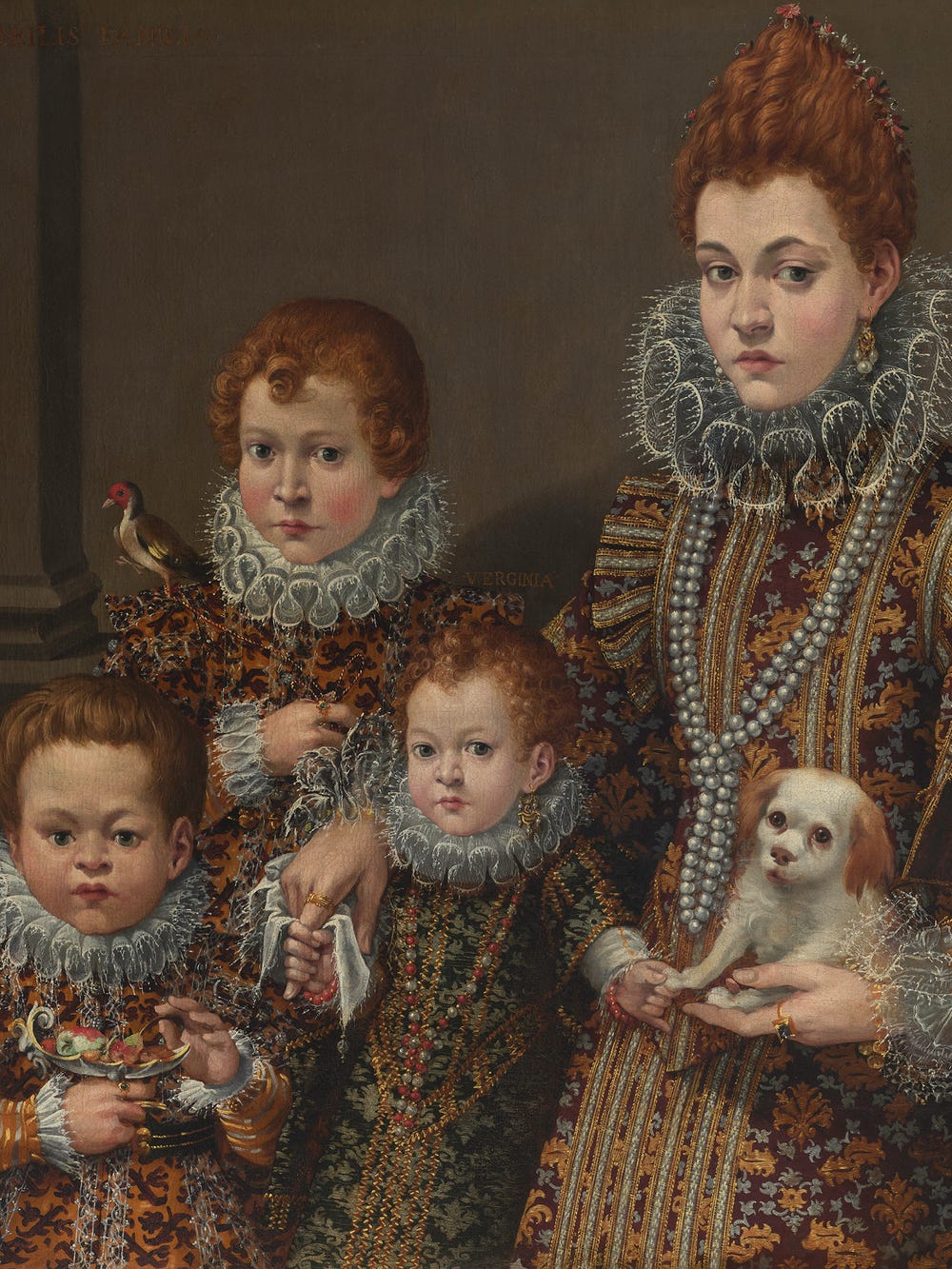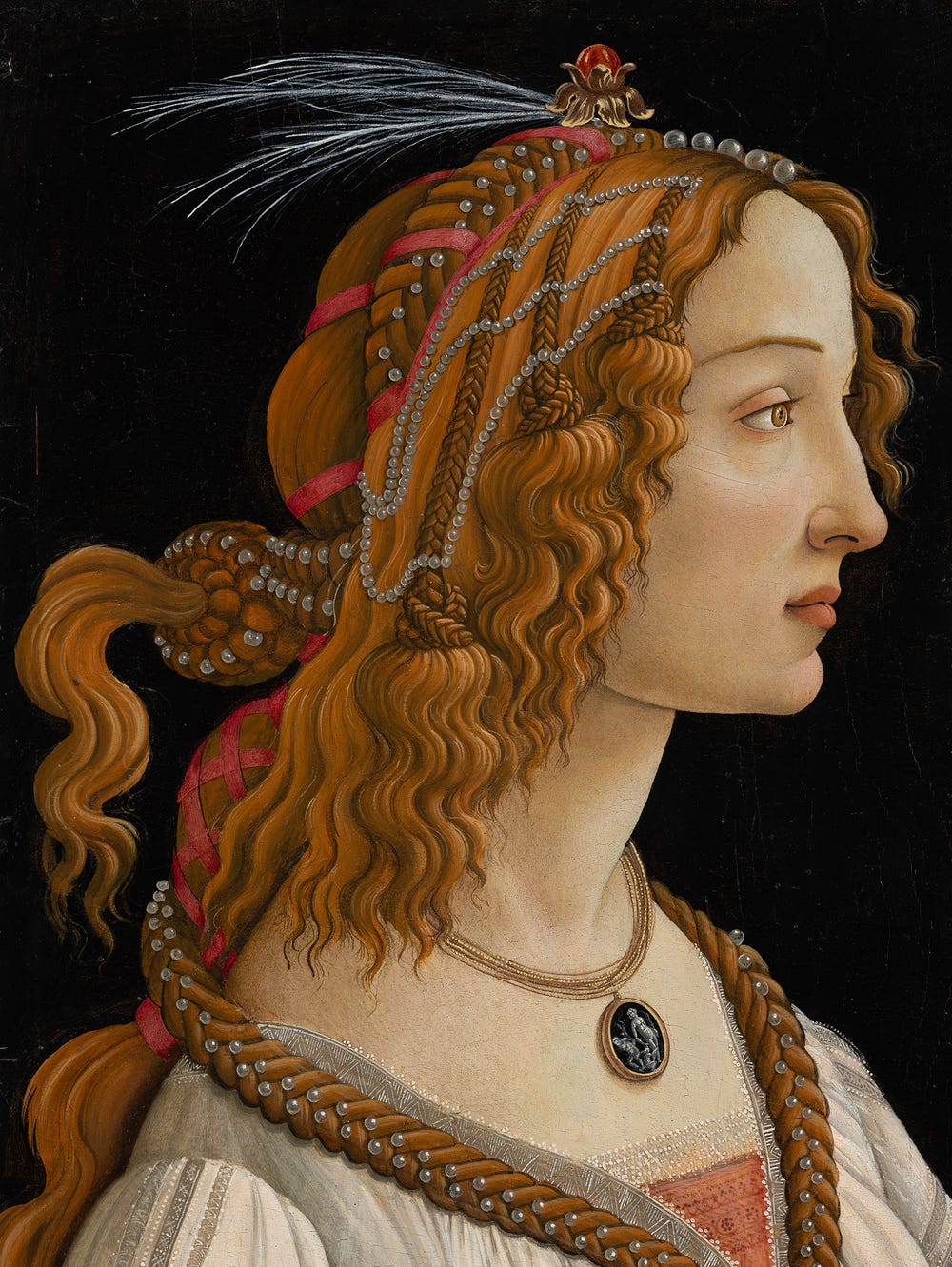James Tissot: Fashion + Faith is the first major reassessment of Tissot’s career in over 20 years. New scholarship on the artist presented in this international retrospective, co-organized with the Musée d’Orsay, and the accompanying monographic publication demonstrate that even Tissot’s most fanciful society paintings reveal rich and complex commentary on topics such as 19th-century society, religion, fashion, and politics.
This reassessment also inspired scholars to explore the authorship of another work in the Fine Arts Museums’ collection: The Impresario. The painting is attributed to Tissot’s fellow Frenchman and friend Edgar Degas. Art historian Anthea Callen outlines some issues surrounding its attribution, and questions if this Degas might actually be a Tissot.
A view of the paintings conservation studio, with The Impresario (foreground) and Tissot’s Self-Portrait (middle ground)
In 1984 Professor Richard Thomson of the University of Edinburgh astutely argued for a reattribution to James Tissot of the Fine Arts Museums’ The Impresario (ca. 1877), an oil study attributed to Edgar Degas. For Thomson it was self-evidently a study for two Tissot paintings: Evening (1878) and The Political Woman (ca. 1883 – 1885). The pose of the man in The Impresario occurs nowhere else in Degas’s work. Degas also did not make preparatory oil studies and rarely used commercially prepared sketching surfaces like this ready-primed paper board, but the technique is typical of Tissot. What follows is new technical data to support an attribution to Tissot.
Attributed to Edgar Degas, The Impresario, ca. 1877. Oil on paper board, 15 x 10 in. (38.1 x 25.4 cm). Fine Arts Museums of San Francisco, Gift of Mr. and Mrs. Louis A. Benoist, 1956.72
Thomson identified a “sauce” for the first layer over primed paper board in The Impresario. This sauce was a translucent liquid mix of dark brown oil color with turpentine typically used for the first freely sketched layer of a painting, as taught at the École des Beaux-Arts, Paris, where Degas and Tissot both studied. The sauce in The Impresario was swiftly applied in sweeping strokes with a wide hog’s-hair brush: it remains clearly visible in the background. This burnt umber underlayer enlivened the white priming while reducing surface glare to facilitate the artist’s work; its warmth and luminosity glow through the freely painted figure to enhance depth and volume.
Degas did develop his own oil-reduced sauce, later called peinture à l’essence (paint with turpentine). First he would leach the oil binder from his tube paint to render it “short” (like short pastry); he would then dilute these colors with turpentine and, like watercolor, apply them fluidly to describe his subjects using an artist’s hog’s-hair oil-paint brush (different from the broad brush used for the background of The Impresario).
Edgar Degas, Portraits at the Stock Exchange, 1878-1879. Oil on canvas, 39 in × 32 in. (100 cm × 82 cm). Musée d’Orsay, Paris, RF 2444
Where society painter Tissot focused on portraits and subjects for his rich, fashionable patrons, Degas’s interest lay increasingly in the underbelly of Parisian life. Close attention to dress and manners feature in both artists’ work, but even work Degas considered “finished” still appeared only partially complete to his contemporaries — as in his commissioned Portraits at the Stock Exchange (1878 – 1879). Contrast the tightly rendered detail throughout Tissot’s Evening with the areas left loosely sketched in Degas’s painting, which dramatically evokes the experience of transience in modern urban life.
James Tissot, L’Ambitieuse (The Political Woman), ca. 1883–1885. Oil on canvas, 56 x 40 in. (142.2 x 101.6 cm). Albright-Knox Art Gallery, Buffalo, New York, Gift of William M. Chase, 1909, 1909:10
In The Impresario, varied brush pressure, contrasting paint opacities, and translucence create light and shade giving form to the tailored figure. A hint of opaque white adds blue-blackness to the twisting form and, swiftly delineated, the frock coat folds billow or stretch taut against his straining back. The frock coat seams are rendered a more solid black, while colored accents for face, ear, cuff, and gloved hand include impasted lead white, to draw the viewer’s eye. Tissot’s acute fashion knowledge is apparent in the sure touch exemplified here, whether in distinguishing fabric textures or the fastidious placing of buttons. The techniques in The Impresario are consistent throughout Tissot’s oil studies.
L–R: Attributed to Edgar Degas, The Impresario, ca. 1877. Oil on paper board, 15 x 10 in. (38.1 x 25.4 cm). Fine Arts Museums of San Francisco, Gift of Mr. and Mrs. Louis A. Benoist, 1956.72; James Tissot, L’Ambitieuse (The Political Woman), ca. 1883–1885. Oil on canvas, 56 x 40 in. (142.2 x 101.6 cm). Albright-Knox Art Gallery, Buffalo, New York, Gift of William M. Chase, 1909, 1909:10; James Tissot, Evening (The Ball), 1878. Oil on canvas, 353/8 x 193/4 in. (90 x 50 cm). Musée d’Orsay, Paris, RF 2253
The virtuosic bravura of The Impresario became mannered polish in Tissot’s Evening and The Political Woman. Yet, whereas in Evening the more upright gentleman is tightly cropped to the right canvas edge (almost losing the right hand), in The Political Woman he is more central and active, thereby clarifying The Impresario’s key gesture: his gloved right hand slips between the rear flaps of his frock coat, a revealing sleight of hand as he discreetly seeks a banknote, perhaps, from the hidden pocket in his tails — secret pockets being a key feature of men’s high-end tailoring.
The standard support chosen for The Impresario is further evidence of Tissot’s hand as opposed to Degas’s. Although the paper board here was trimmed, its size and substance correspond closely to other Tissot studies: all are relatively small, and on paper board (carton), or paper laid on panel, or panel. However, identifying supports by eye is often inaccurate, and the term “board,” for example, may refer to wood, paper board, or cardboard, so supports are best examined unframed, microscopically. A surface that resembles canvas may in fact be paper or card commercially primed for oil painting and impressed with a canvas texture. At this date, these were widely available off the shelf in Europe, Britain, and America, ready-primed in standard French and British sizes, their wet priming “impressed” with canvas to mimic its texture.
There is, in short, ample evidence to credit Tissot with The Impresario, which continues to be a subject for study at the Fine Arts Museums of San Francisco.
Text by Anthea Callen, Professor Emeritus of Visual Culture, University of Nottingham, UK; and Professor Emeritus, The Australian National University, Canberra.
